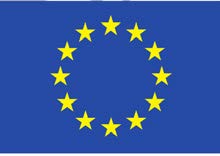Enhancement of COVID-19 Detection by Unravelling its Structure and Selecting the Optimal Attributes
SHAPES project was presented during the “2021 IEEE Global Communications Conference” (GLOBECOM), 7 -11 December 2021 – Madrid, Spain. The presentation consists of the paper entitled “Enhancement of COVID-19 Detection by Unravelling its Structure and Selecting the Optimal Attributes”, with the following abstract:
According to the current unprecedented pandemic, we realise that we cannot respond to every contagion novel virus as fast as possible, either by vaccination or medication. Therefore, it is paramount for the sustainable development of antiviral urban ecosystems to promote early detection, control, and prevention of an outbreak. The structure of an antivirus-based multi-generational smart-city framework could be crucial to a post-COVID-19 urban environment. Humanitarian efforts in the pandemic’s framework deployed novel technological solutions based on the Internet of Things (IoT), Machine Learning, Cloud Computing and Artificial Intelligence (AI). We aim to contribute by improving real-time detection using data mining in collaboration with machine learning techniques through our research work. Initially, for detection, we propose an innovative system that could detect in real-time virus propagation based on the density of the airborne COVID-19 molecules—the proposal based on the detection through the isothermal amplification RT-Lamp [1]. We also propose real-time detection by spark-induced plasma spectroscopy during the internal airborne transmission process [17]. The novelty of this research work, called characteristic subset selection, is based on identifying irrelevant data. By deducting the unrelated information dimension, machine learning algorithms would operate more efficiently. Therefore, it optimises data mining and classification in high-dimensional medical data analysis, particularly in effectively detecting COVID-19. It can play an essential role in providing timely detection with critical attributes and high accuracy. We elaborate the teaching-learning method optimisation to achieve the optimal set of features for the detection.
Read the full text: click here!


